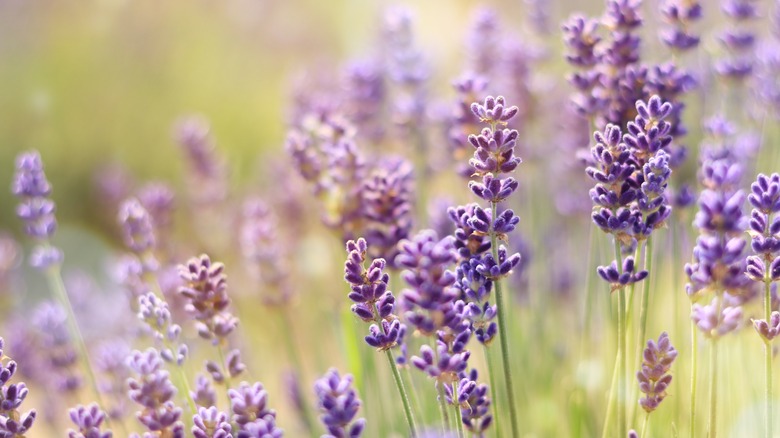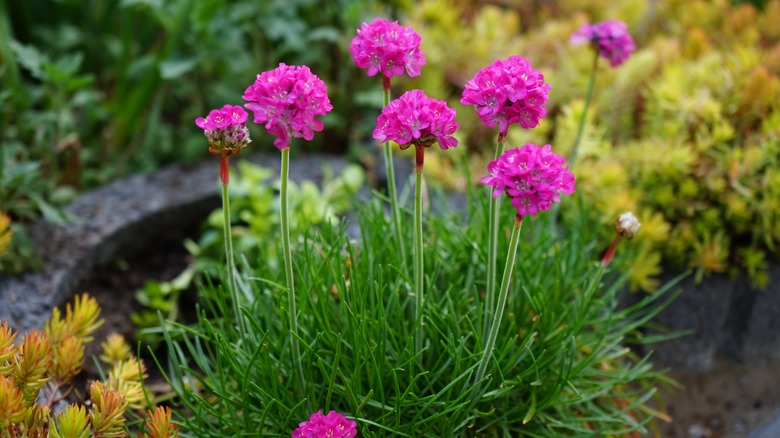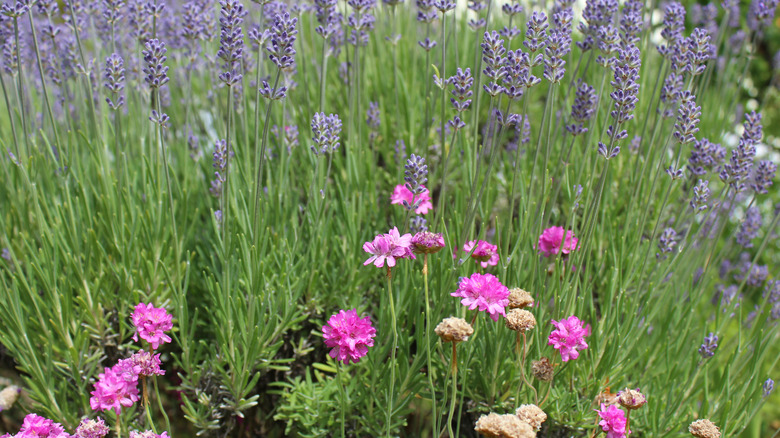The Pretty Pink Flower You Can Grow Next To Lavender For Even More Color
Who doesn't love lavender? Between its gorgeous scent and its elegant purple flowers, it's sure to turn heads and attract pollinators to the garden. Lavender thrives in similar conditions to the pink flowering plant called sea thrift (Armeria maritima), so planting the two flowers together ensures that not only will both plants perform their best, but their blooms will also complement each other perfectly.
Both sea thrift and lavender (Lavandula spp) are native to the Mediterranean and favor warm, dry weather. Both flowering plants thrive near the coast but can grow in a variety of locations. Despite not being native to North America, neither plant is invasive, and both are huge hits with butterflies and other pollinators, making them ideal for many gardens and landscapes. Even better, because both plants tend to bloom during hot summer weather, you can enjoy watching your lavender and sea thrift bloom simultaneously, filling your garden with a riot of color. Both plants are evergreen as well, so you can take pleasure in their charming foliage year-round.
Growing lavender and sea thrift
There are several species within the larger lavender genus, including English lavender (Lavandula angustifolia), French lavender (Lavandula stoechas), and hybrid lavender (Lavandula x intermedia). English lavender, which is hardy in zones 5 through 9, is generally considered the hardiest type of lavender and is an excellent option for many gardeners in colder climates. Sea thrift grows in a similar range of zones, thriving in 4 through 8.
Both lavender and sea thrift require full to part sun and can be easily killed by overwatering. To ensure your plants aren't suffering from wet feet, plant lavender and sea thrift in loamy, well-draining soil and check that the soil is dry before watering. While both lavender and sea thrift are available from seed, they, like many perennials, take time to mature, so it is often more practical to purchase young plants or get a cutting from a friend.
Combining lavender and sea thrift in the garden
Sea thrift and lavender are a perfect garden combination thanks to their similar growing needs. As lavender generally grows to around 2 feet in height and sea thrift stays smaller with a maximum height of around a foot, it's best to plant lavender behind sea thrift so it isn't overshadowed. Sedum, other succulents, and many other beautiful plants also pair nicely with lavender and sea thrift. Be aware that while lavender is edible for people and can be used in teas, it is toxic to cats, dogs, and horses.
As beautiful as the combination of purple lavender and pink sea thrift is, you can use these plants even if pink and purple don't work with your garden's color story. In addition to its classic purple shade, lavender can be found in white and pink, as can sea thrift. Opting for white flowering varieties of both lavender and sea thrift could make for a stunningly elegant waterwise garden.


